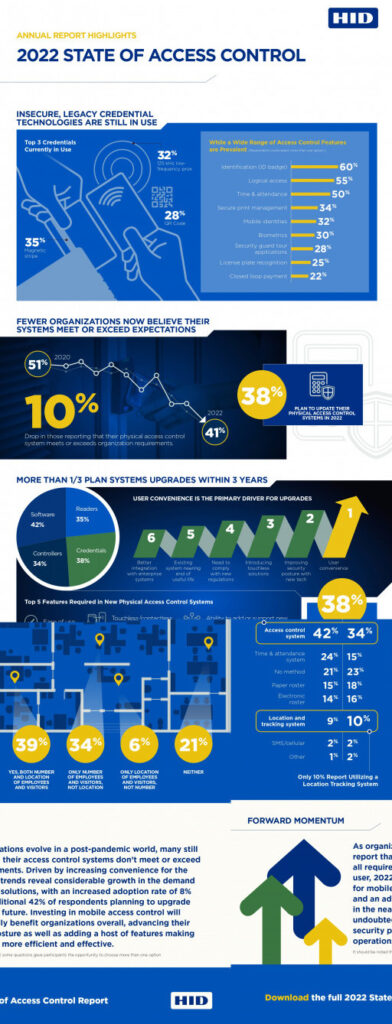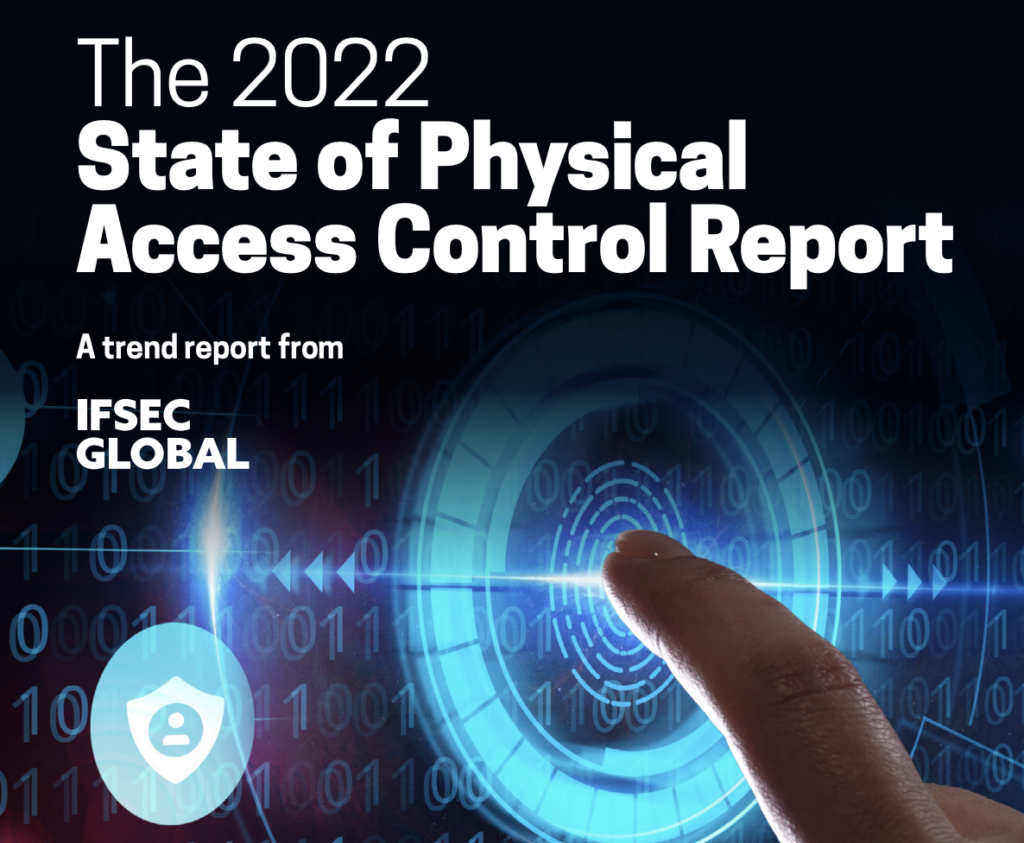Over the past two years, significant changes have occurred in fundamental organisational practices, including a renewed focus on hygiene and safety practices, led by the World Health Organization, and millions of people switching to remote work. Access control solutions have been instrumental in making this transition smoother and more effective, but what was OK before the pandemic is not always adequate for today’s business needs.
The report indicates that the global market for physical access control equipment is estimated to be worth $5.66 billion in 2020 and to grow at a compound annual growth rate of 7.3% to $8.07 billion by 2025.
HID Global and IFSEC joined forces to produce a report examining the current state of physical access control systems and the challenges they present to those who use them regularly. It also assessed the trends and opportunities ahead.
HID Global offers trusted identity solutions that enable safe transactions, productive work, and freedom of movement. Various organisations use HID solutions, from governments to educational institutions, hospitals, financial services, and industrial businesses.
Over 1000 respondents participated in the survey from the UK, EMEA, North America and Asia Pacific regions, with the UK comprising just under a third of EMEA responses. Industry sectors include software, technology or communications, education, government, manufacturing/industrial, professional services, banking, finance or insurance, and healthcare.
Most respondents were end users, including 21% of physical security managers, 19% of IT managers/directors, 7% of facility managers/directors, and 6% of information security managers/directors.
According to the survey, magnetic stripe cards and 125-kHz low-frequency credentials are no longer considered a major improvement over manual locks and keys. Modern credentials are encrypted and feature mutual authentication.
 The first generation HID MIFARE Classic and HID iCLASS are used by 18% and 26% of organisations, respectively, while 15% support MIFARE DESFire EV1/2/3, and 10% use Seos (either physical or mobile) credentials.
The first generation HID MIFARE Classic and HID iCLASS are used by 18% and 26% of organisations, respectively, while 15% support MIFARE DESFire EV1/2/3, and 10% use Seos (either physical or mobile) credentials.
Many organisations still rely on older technology, and hackers can easily clone outdated technology. This makes older technology vulnerable to cyber security breaches.
HID Global’s Ann Brookes explains that credential technologies must address this vulnerability to prevent breaches in physical security from leading to IT security.
In the last 10-15 years, access control technology has evolved significantly, with 60% of organisations using ID badges, 50% using time and attendance, and 49% using parking/gate control. In addition, mobile IDs and biometrics are gaining traction in the marketplace, but they are still relatively new.
The number of those using biometrics is set to rise, with 17% of respondents citing they were planning to upgrade to biometric access control or were already in the process of doing so.
Most organisations now use logical access, which may have increased during the pandemic when security teams needed to ensure employees could access essential systems remotely.
Inquired about how long they’ve had their physical access control systems, 42% said their systems were less than three years old, 26% were between 3-6 years old, and only 19% were older than six.
Among the biggest challenges facing access control professionals are security and convenience. 43% of respondents would like to make physical access control administration easier, and the most cited challenge is improving user convenience.
Even though 41% of users believe their current access control system meets or exceeds their needs, 38% of all respondents said they plan to update their physical access control system in some way in 2022.
Open software technology, such as Open Supervised Device Protocol (OSDP), allows users to upgrade different components of physical access control systems without having to upgrade both simultaneously. This increases security and reduces costs associated with maintaining physical access control systems.
Many end-users remain unsure about upgrading their physical access control systems, though some may be unsure because they are not deemed business critical.
The decision-making process for an access control system would likely fall to the security department. Still, as the industry moves away from standalone technology, access control is now integrating with HR, facilities, IT, HVAC and many more building systems.
Installers, integrators, consultants and vendors must balance multiple demands and departmental influences when migrating to new access systems.
Security and facilities managers are becoming increasingly aware of the efficiencies created by monitoring occupancy data. Therefore, an access control system that utilises or integrates with an occupancy monitoring programme could form a key part of a sustainable strategy.
Access control and time and attendance systems are the most popular methods of monitoring occupancy data, with electronic and paper rosters remaining in use.
Bevan Hayes, Global Product Marketing Manager, Mobile Access, Physical Access Control Solutions at HID Global, explains that a connected building makes use of location together with user intent, their preferences, back-end systems, and processes to create opportunities for productivity, space, and energy efficiencies, and safer, more engaging experiences.
To read the full report, click here



